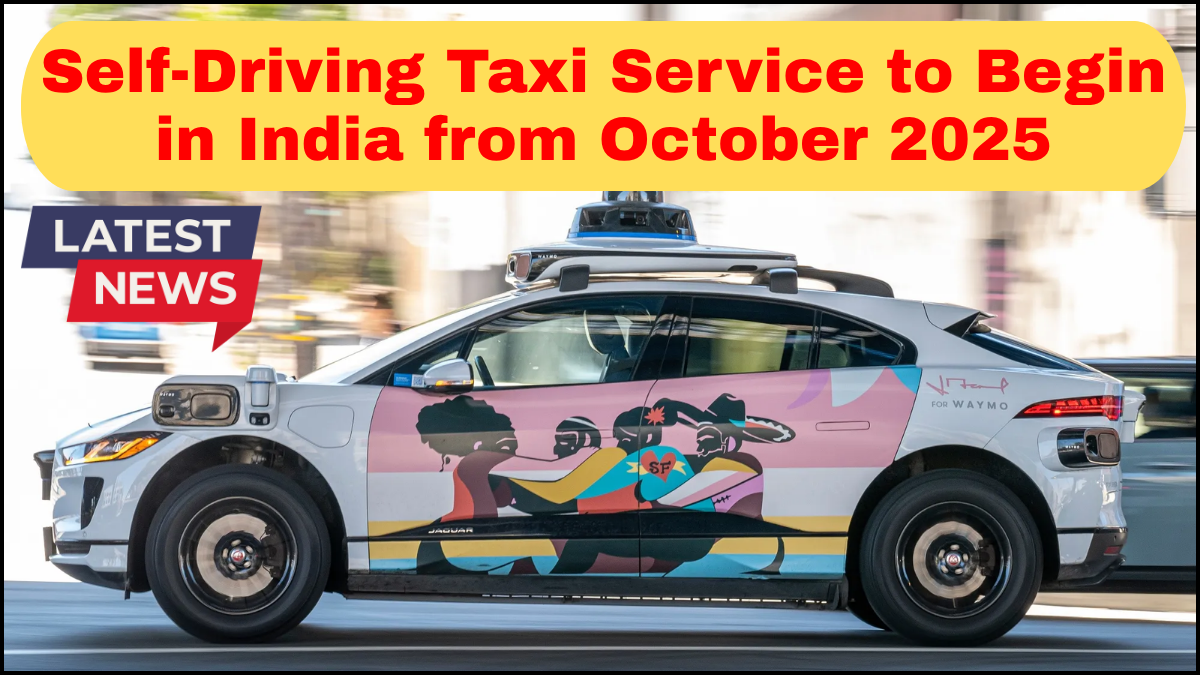India is stepping into a new era of mobility with the official launch of self-driving taxi services set for October 2025. This significant leap toward smart transportation is part of a broader autonomous car pilot project initiated in major cities across the country. With rapid advancements in AI, sensors, and vehicle-to-infrastructure technology, India’s foray into autonomous taxis signals a transformative shift in how people move within urban environments.

What the Launch Means for India’s Transportation Sector
The self-driving taxis launch in India is more than just a technological showcase—it’s a game-changer for the country’s overloaded transport networks. Urban areas like Delhi, Bengaluru, Mumbai, and Hyderabad are slated to be among the first to test and deploy these services. These cities face persistent traffic congestion, pollution, and public transport shortages—problems that autonomous fleets are being designed to help alleviate.
The Ministry of Road Transport and Highways (MoRTH), in partnership with both domestic and international tech firms, is backing the pilot project. Key players in AI and automotive innovation—such as Tata Elxsi, Ola Electric, and a few Silicon Valley startups—are leading the hardware and software development.
How the Autonomous Car Pilot Will Work
Initially, the autonomous car pilot will deploy a limited number of self-driving taxis under strict regulatory oversight. These vehicles will be equipped with Level 4 autonomy, meaning they can operate without human input in specific geofenced areas. However, a trained safety driver will be present during the pilot phase to ensure immediate human intervention if needed.
Vehicles will rely on a combination of LiDAR, radar, GPS, and high-definition cameras to navigate through complex traffic scenarios. Central control systems powered by AI will coordinate the fleet, optimize routes, and manage pickups and drop-offs through a dedicated mobile app.
Key Features and Advantages
1. Enhanced Safety
Contrary to popular fears, autonomous vehicles are statistically safer. They eliminate risks associated with human error, which is a leading cause of road accidents in India. By adhering to traffic rules and maintaining consistent driving patterns, self-driving taxis aim to make roads significantly safer.
2. Accessibility for All
Self-driving taxis offer a lifeline to people with mobility challenges, including the elderly and disabled. With voice-command interfaces and app-based booking systems, these vehicles provide a higher level of accessibility compared to traditional taxis.
3. Eco-Friendly Fleet
Most of the autonomous taxis planned for deployment will be electric vehicles (EVs). This is in line with India’s commitment to reduce its carbon footprint and promote clean energy alternatives. The use of EVs also cuts down on fuel costs and air pollution, offering long-term environmental benefits.
Challenges and Road Ahead
While the self-driving taxis launch in India is a bold step, it is not without hurdles. Infrastructure gaps, unpredictable traffic behavior, and limited digital literacy in certain areas could slow the adoption curve. Additionally, legal and ethical questions around liability and data privacy need robust frameworks.
To address these issues, policymakers are working on comprehensive guidelines that cover licensing, data security, and real-time vehicle monitoring. The government is also investing in smart traffic infrastructure to support vehicle-to-network communication.
Economic and Social Impact
If successful, the autonomous taxi rollout could spur job creation in tech and support services, even as it transforms the role of traditional drivers. New employment opportunities in fleet maintenance, software engineering, and remote operations are expected to emerge. At the same time, public acceptance and trust will be pivotal in determining how fast these services scale beyond pilot cities.
FAQs
Q1: Which cities in India will get self-driving taxis first?
The pilot will start in metro cities like Delhi, Bengaluru, Mumbai, and Hyderabad, where infrastructure and demand for tech-driven transport are higher.
Q2: Will these taxis be completely driverless?
Initially, they will include a human safety driver during the pilot phase, but the long-term goal is full automation within controlled urban zones.
Q3: How can I book a self-driving taxi?
Bookings will be done via a dedicated mobile app, similar to existing ride-hailing platforms, but integrated with AI route optimization features.
Q4: Are self-driving taxis safe?
Yes, they are designed to reduce human error. The vehicles follow strict safety protocols and are monitored in real time by AI control systems and human supervisors.
Q5: Will self-driving taxis replace human drivers?
Not immediately. While the technology reduces the need for drivers, it also creates new roles in tech support, remote monitoring, and vehicle maintenance.
click here to learn more